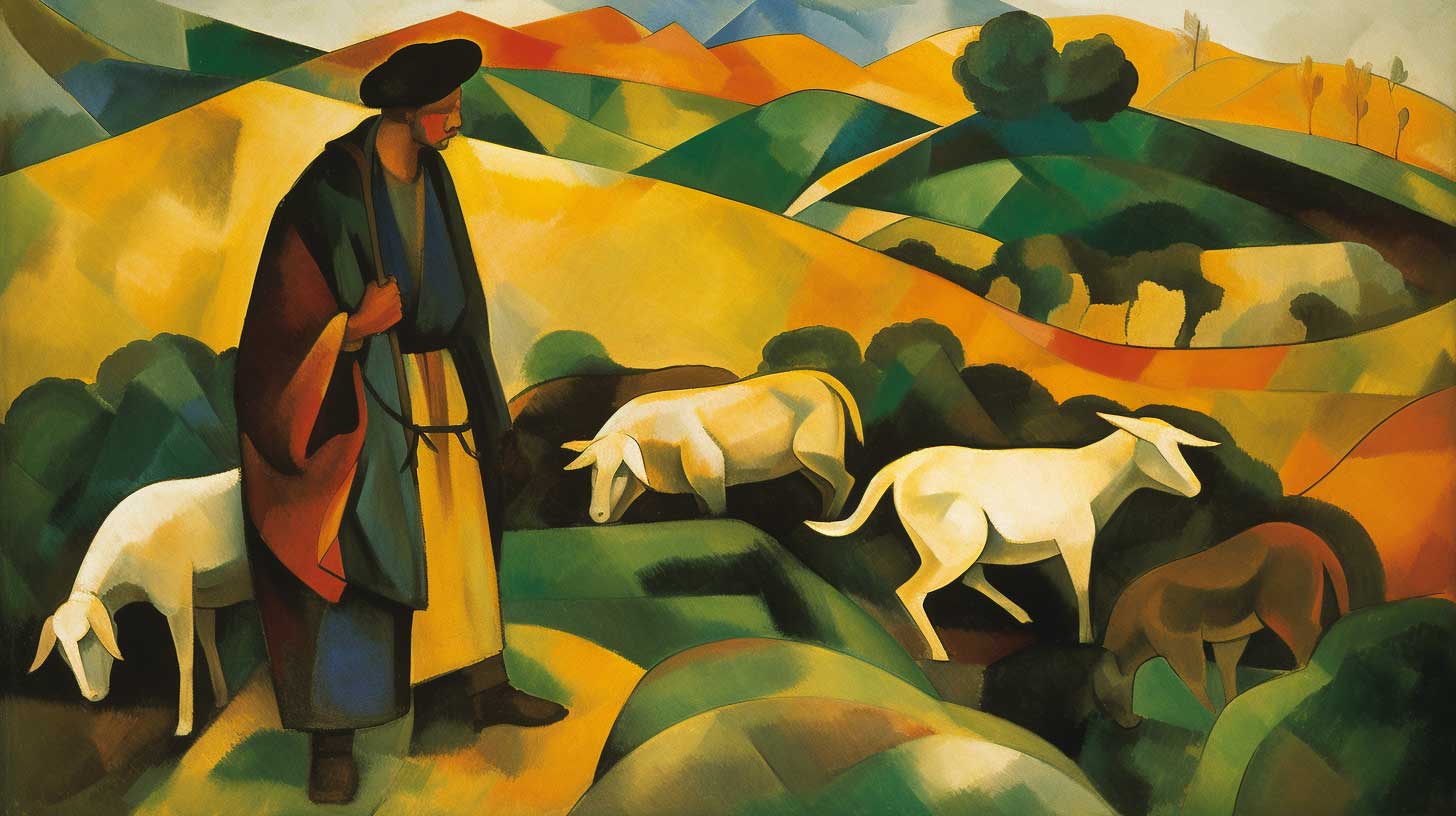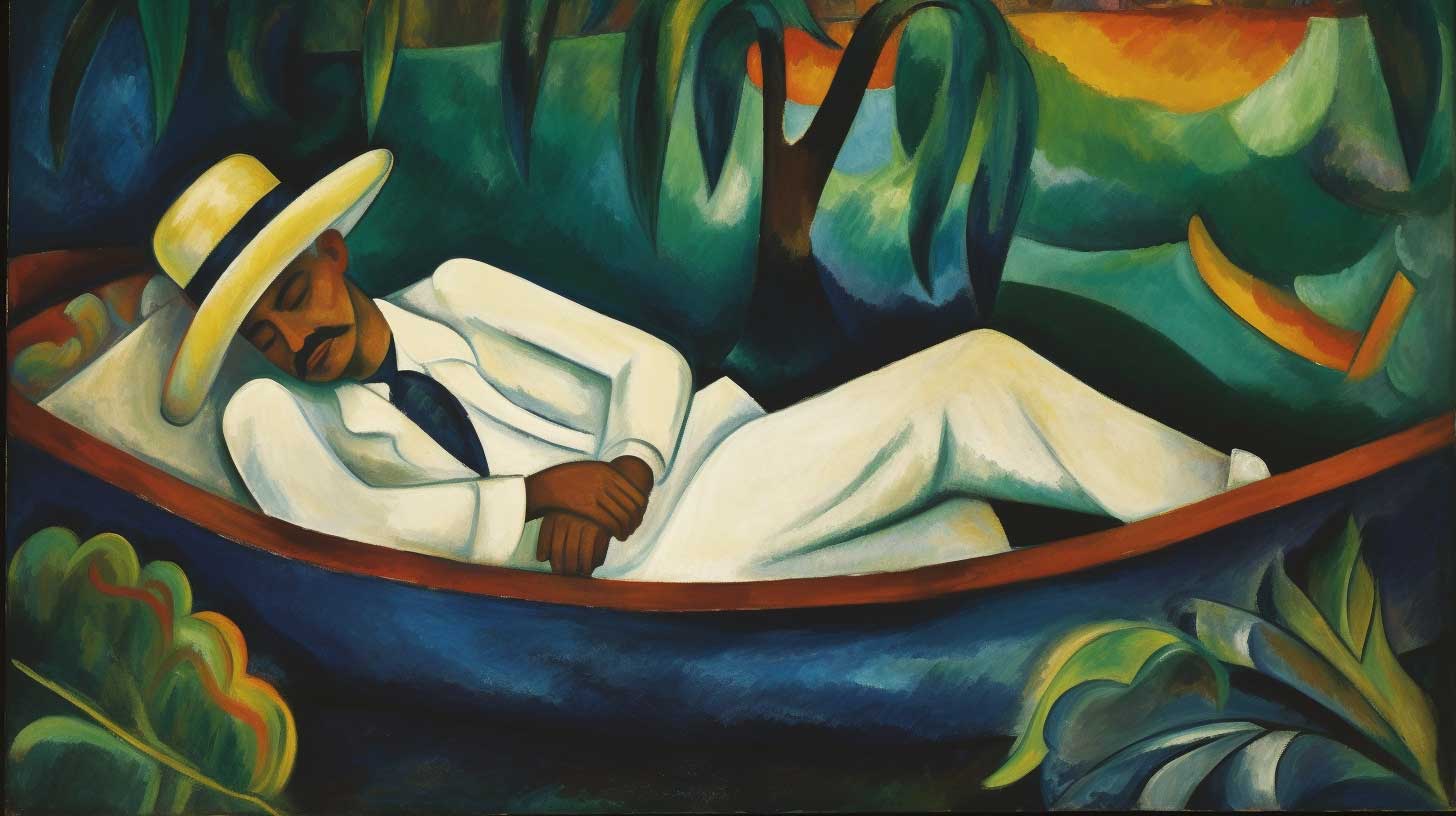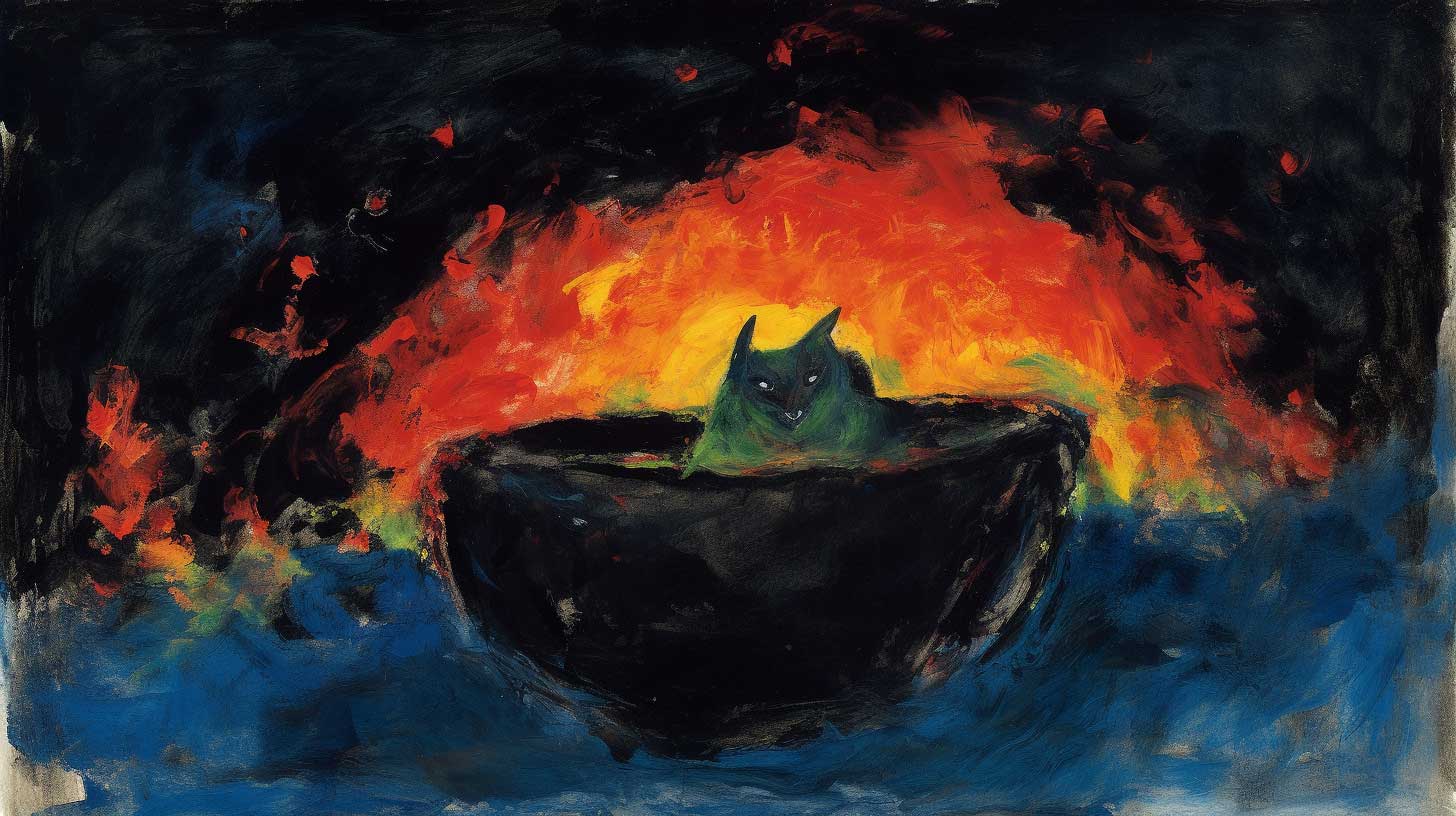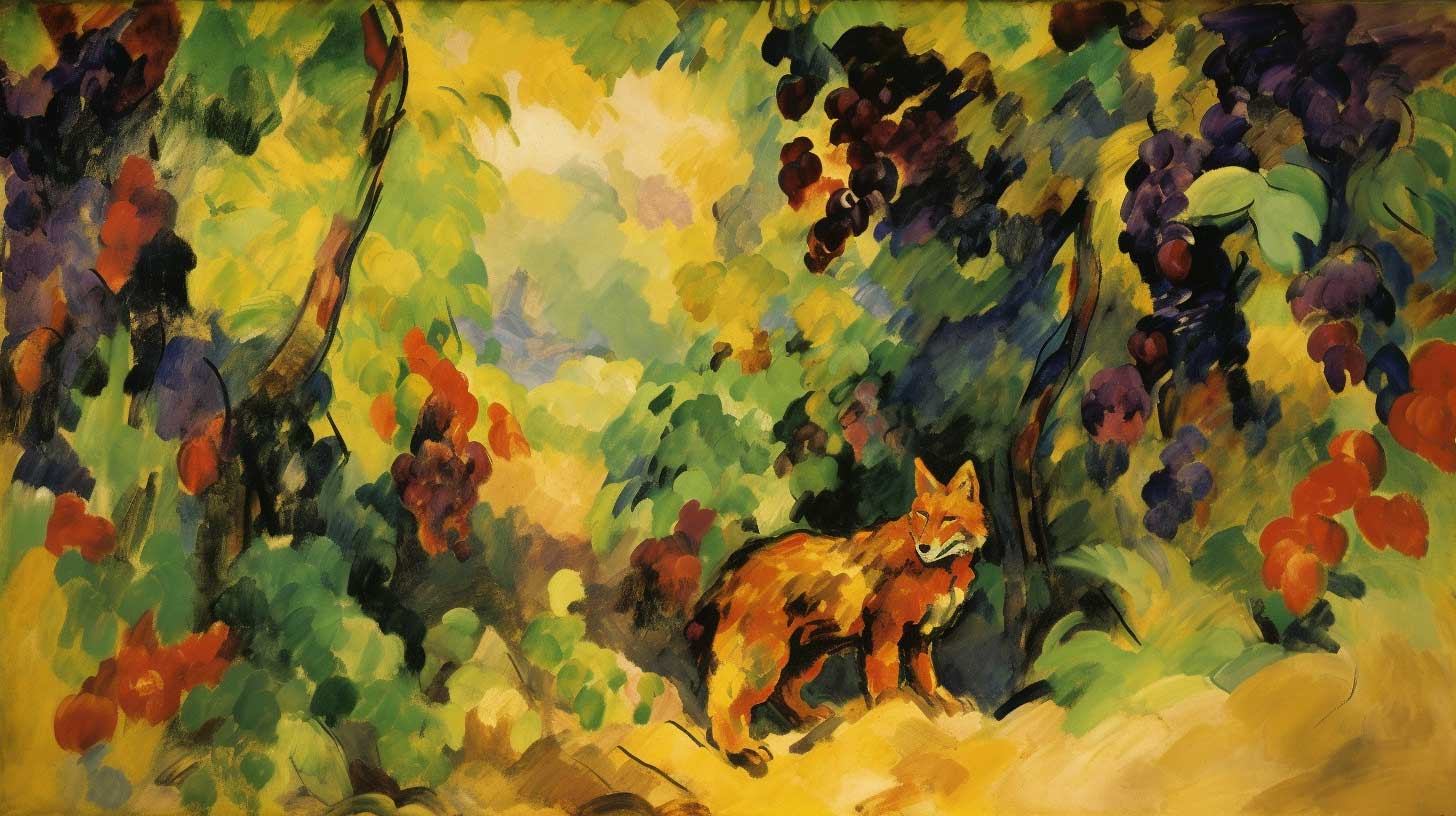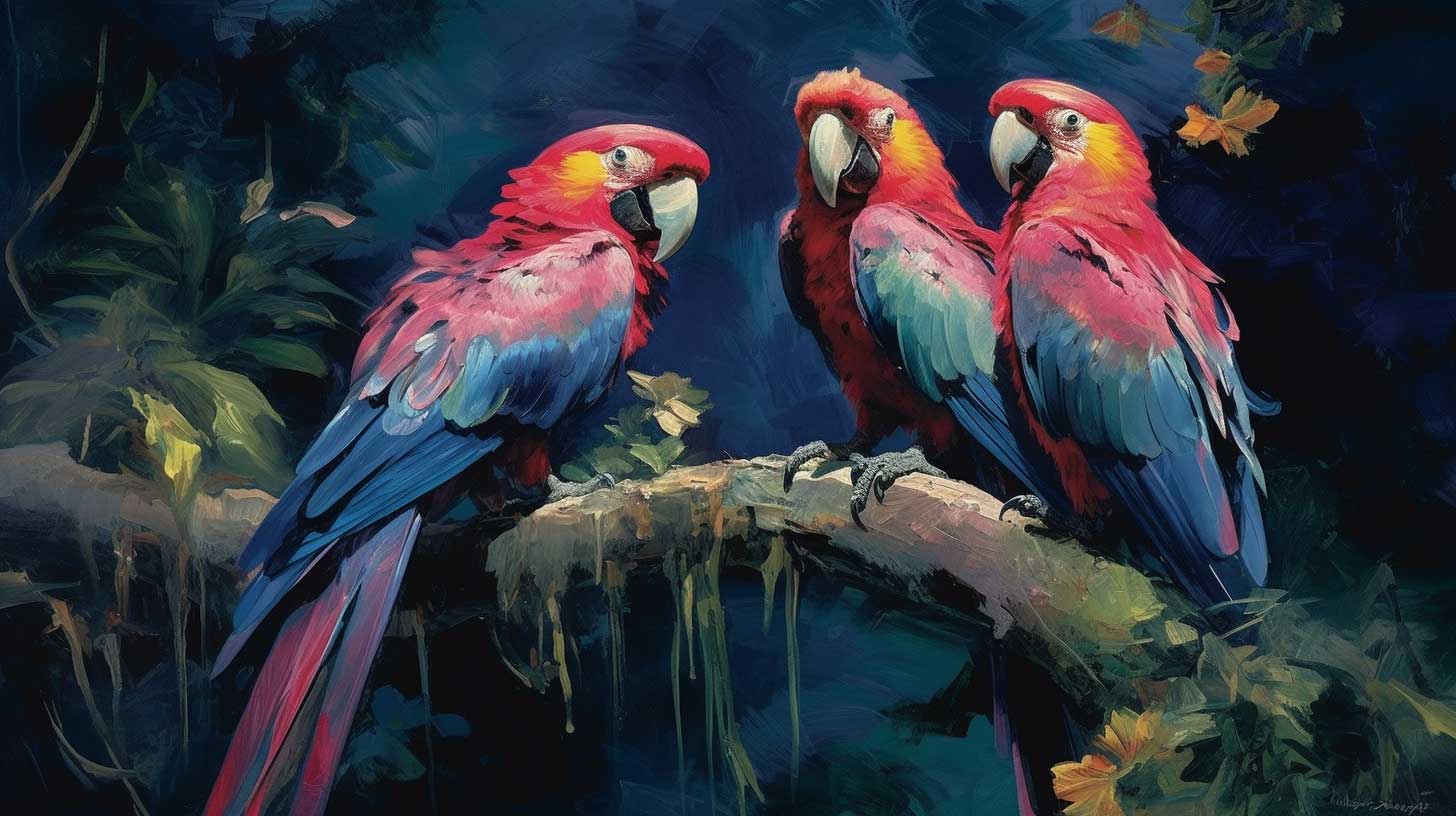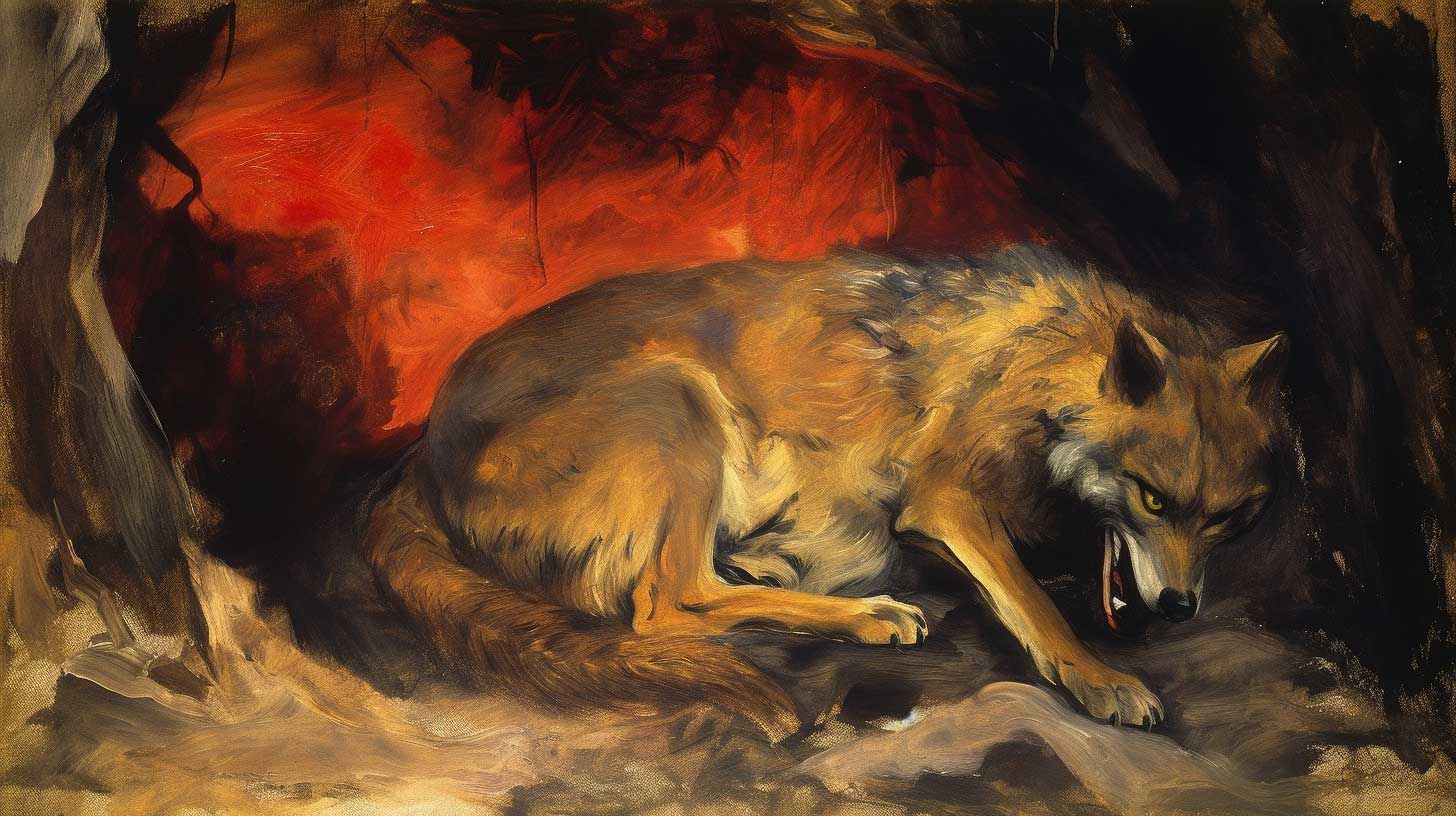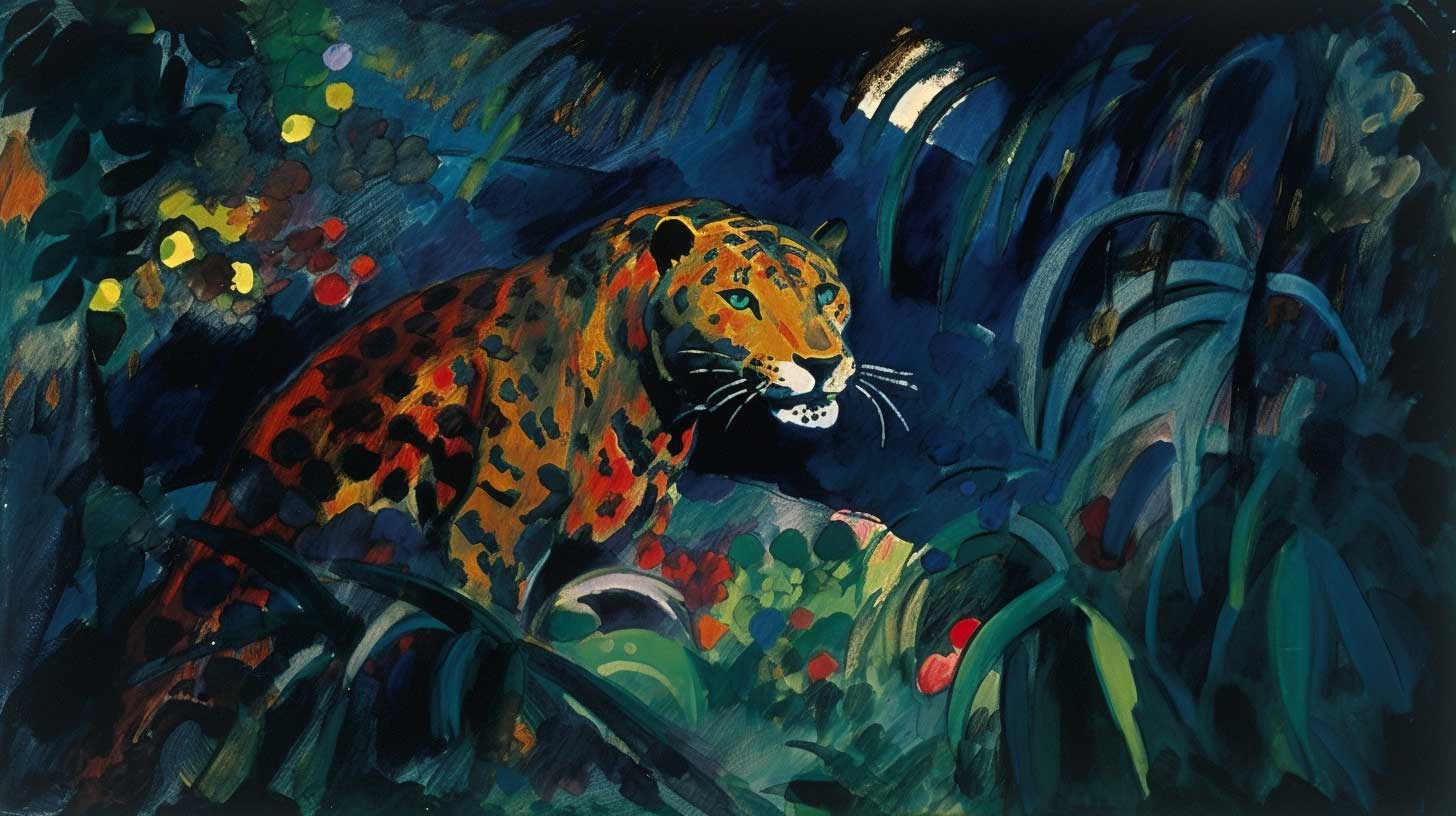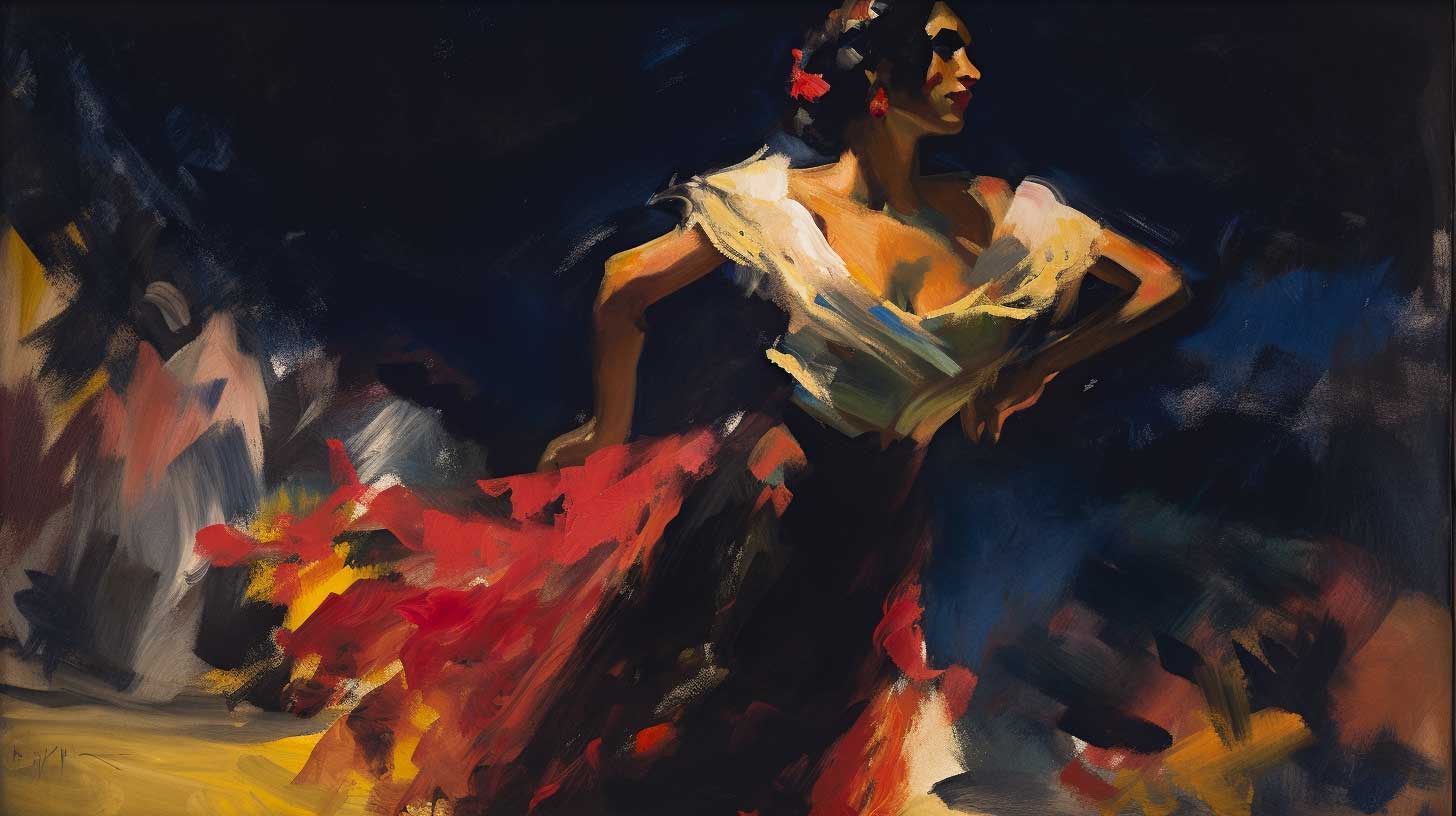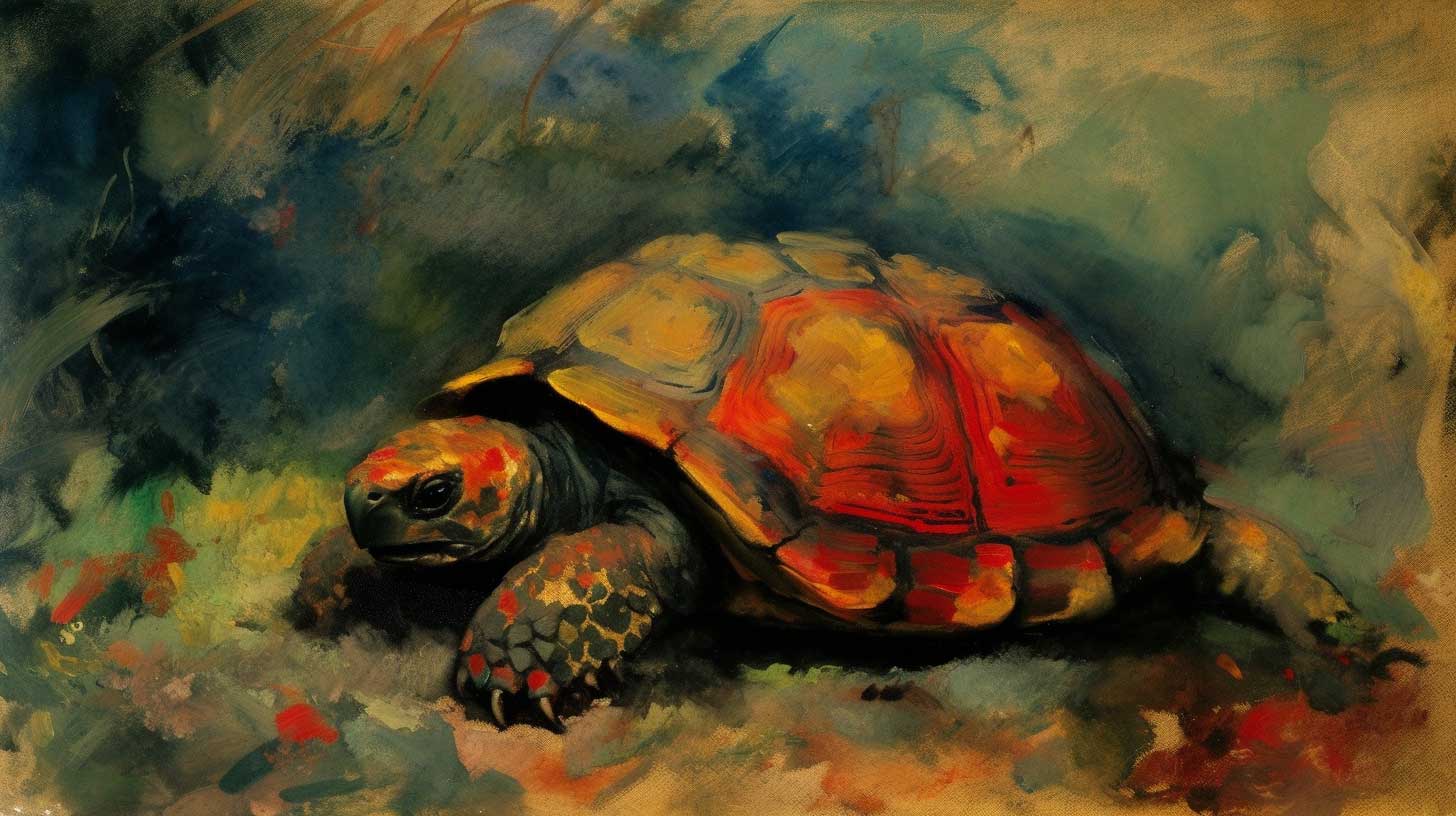Fables & Folktales
The Parable of the Ewe Lamb (Old Testament)
The Parable of the Ewe Lamb (2 Samuel 12:1-4) is one of the more famous parables from the Old Testament. It is a parable about the injustice of the rich taking from the poor. This is a modern retelling by Juan Artola Miranda.
A long time ago, in a faraway kingdom, there lived a wealthy shepherd named David. He was well-respected and had vast herds of sheep, so numerous that they covered the hillsides. David was admired for his wealth and power, and he enjoyed a life of great abundance.
In the same kingdom, there lived a poor man named Uri. Uri was a humble man who had only one precious ewe lamb. Despite his humble circumstances, he loved the little lamb dearly, and she was like a member of his family. Uri cared for the lamb with great devotion, feeding her from his own plate and letting her drink from his own cup. At night, she would sleep by his side, providing comfort and warmth.
One day, a traveller came to visit David, the wealthy shepherd. As was customary, David was expected to prepare a meal to honour his guest. With his many flocks, it would have been an easy task for David to select one of his countless sheep for the feast.
However, rather than choose from his own vast herds, David’s eyes wandered toward Uri’s small, humble dwelling. He saw Uri’s beloved ewe lamb, and he coveted her. Instead of taking a sheep from his own flock, David decided to seize the poor man’s only possession, the one he cherished above all else.
David ordered his servants to take Uri’s ewe lamb by force, and they slaughtered her to prepare a feast for the visiting traveller. The wealthy shepherd showed no remorse for his actions, nor did he seem to realize the heartache he had caused Uri.
When word of David’s actions reached the wise prophet, Nathan, he went to confront the shepherd. Nathan shared the story of Uri and his beloved ewe lamb, and as David listened, anger flared within him.
“Who is this heartless man who would dare to do such a thing?” David demanded. “He surely deserves to die for his cruelty!”
Nathan then looked into David’s eyes and said, “You, O shepherd, are the heartless man of this tale!”
The Fisherman & the Industrialist (a Parable by John Lane)
The Fisherman and the Industrialist is a short story by John Lane, found in his book Timeless Simplicity, originally published in 2000. It’s a parable about greed, contentedness, and modern capitalism.
It’s a simplified version of Anecdote for Lowering Work Morale (Anekdote zur Senkung der Arbeitsmoral), a parable by the Nobel Prize-winning German writer Heinrich Böll in 1963.
The industrialist was horrified to find the fisherman lying beside his boat, smoking a pipe.
“Why aren’t you fishing?” asked the industrialist.
“Because I’ve caught enough fish for the day.”
“Why don’t you catch some more?”
“What would I do with them?”
“Earn more money. Then you could have a motor fixed to your boat and go into deeper waters and catch more fish. That would bring you money to buy nylon nets, so more fish, more money. Soon you would have enough to buy two boats, even a fleet of boats, then you could be rich like me.”
“What would I do then?”
“Then you could sit back and enjoy life.”
“What do you think I’m doing now?”
Why the Bat Flies at Night (A Classic Nigerian Fable)
The fable of Oyot the bush rat and Emiong the bat is a traditional Nigerian folktale passed down through generations. This is an adaptation by Juan Artola Miranda.

Once upon a time, in a small Nigerian village, there lived a bush rat named Oyot and his cunning friend, Emiong the bat. Oyot and Emiong were inseparable, sharing a great love for savoury soups and indulging in them often.
One day, while feasting on a delicious soup prepared by Emiong the bat, Oyot the rat couldn’t restrain his curiosity any longer. “My dear friend,” he asked, “how do you make your soups so incredibly tasty?”
Emiong, who harboured a hint of jealousy toward Oyot, decided to play a trick on the rat. “Ah, Oyot,” he said with a sly grin, “the secret lies in my own sweet flesh. I simply boil myself in the water, and my flavor makes the soup truly delectable.”
Oyot listened in amazement and begged Emiong to show him this wondrous technique. Emiong agreed, and together they went to prepare the soup. Before the fire broiled the water, Emiong jumped into the soup, roiling it with his claws to make it seem as if the water were indeed boiling. Oyot was fascinated, staring raptly at this strange feat, but Emiong told him to go set the table. When Oyot left, Emiong jumped out of the now-hot water and quickly finished preparing the soup. It was delicious, though perhaps somewhat muskier than usual.
Eager to replicate Emiong’s culinary prowess, Oyot returned to his home and shared the newfound secret with his wife. He instructed her to boil a pot of water. He would then enhance the soup with his own essence.
As soon as his wife turned her back, Oyot leaped into the boiling pot, believing he would emerge unscathed, as Emiong had. Sadly, Oyot perished in the pot, becoming a true ingredient in the soup. When his wife discovered her husband’s lifeless body, she was filled with grief and anger.
Distraught, she reported the tragic incident to the village king. The king, furious at Emiong’s deception, ordered his subjects to capture the bat and bring him to justice. The villagers set out en masse, searching high and low for Emiong.
Anticipating the trouble that awaited him, Emiong had already taken flight, seeking refuge deep within the bush. For days, the villagers hunted for him, but Emiong remained elusive. Venturing out only in the cover of darkness.
Unable to find Emiong, the bush animals began taking their anger out on the other bats, hunting them down and making delicious soups of them. And so, bats no longer come out during the day.
That reminds me of my favourite African fable, The Snake, the Farmer, and the Heron.
The Fox & the Grapes (An Ancient Greek Fable)
This is an old Greek fable originally popularised by Aesop in 600 BCE. It’s one of the most influential fables of all time, and it gives us the expression “sour grapes.” This is a re-telling by Juan Artola Miranda.
Once, in a lush and verdant forest, there lived a cunning and sly fox. As he roamed beneath the sun-dappled trees, he happened upon a vineyard. The vineyard was laden with ripe and succulent grapes, glistening with morning dew and hanging in bunches from sturdy vines. The sight of such tantalizing fruit made the fox’s mouth water, and he decided that he must taste them.
The fox approached the vineyard and stood beneath the vines, looking up at the grapes just out of reach. He coiled like a spring and then leapt into the air, stretching his paws towards the tempting fruit. Alas, the grapes remained beyond his grasp. Undeterred, the fox leapt again and again, each time jumping higher and reaching further, but to no avail. The grapes continued to taunt him, swaying gently in the breeze as if mocking his efforts.
Finally, exhausted and weary, the fox paused and regarded the grapes one last time. With a flick of his tail and a snort of disdain, he declared, “I am sure those grapes are sour and not worth my time. I shall not waste another moment on them.” And with that, the fox turned and sauntered back into the forest, his pride intact but his appetite unsatisfied.
The King’s Parrots (An Old Indian Fable)
The King’s Parrots is a famous parable from the Panchatantra, a collection of Indian fables from the 3rd century BCE. It’s a cynical story about the value of friendship with those less fortunate than ourselves.
This is a retelling in my own words.
Read MoreThe Clever Jackal & the Lion’s Pride (An Old Indian Fable)
The Clever Jackal and the Lion’s Pride is a famous fable from the Panchatantra, a collection of Indian fables from the 3rd century BCE. This is a re-telling by Juan Artola Miranda. It is about manipulating others by feeding their egos.
A long time ago, in a faraway jungle, there lived a lion with a jackal for a servant. One day, when the lion tried to kill an elephant, he took such cruel wounds that he could not stir a foot. Since the lion could not hunt, there was no food, and the jackal grew weak.
“O King,” said the jackal, “I am tortured with hunger. If I do not eat soon, I will surely perish, and then who will serve you?”
“Good jackal,” said the lion, “search out some animal that I can kill even in my present state. Once we have some food in our bellies, we will be well again.”
The jackal roamed the jungle until he found a frail donkey wandering the outskirts of a nearby village. The donkey was choking over the thin and prickly grass. The jackal approached him and said, “Uncle, my respects to you. It’s been so long since we last met. How have you grown so feeble?”
“What am I to do, nephew?” the donkey answered. “My master is merciless, torturing me with dreadful burdens and never sharing even a handful of fodder. I eat nothing but this prickly grass seasoned with dust.”
“Well, uncle,” said the jackal, “I know a lovely spot by a river, covered with emerald grass. Come and live with me. I promise you the pleasures of good meals and witty conversations.”
“Very well said, nephew,” answered Flop-Ear, “but village beasts are likely to be killed by forest animals. So what good is your charming spot to me?”
“Well,” said the jackal. “There are three unmarried she-donkeys who were tormented just like you. They are young and frisky, and they have grown plump. The other day, they said to me: ‘Uncle dear, go to some village and bring us a proper husband.’ That is why I came to fetch you.”
When he heard the jackal’s words, the donkey’s limbs quivered with lust. He said, “In that case, my dear sir, lead the way. We will hurry there.”
So the poor donkey went with the jackal into the lion’s den. However, the lion was dreadfully overeager. When the donkey drew near enough to pounce upon, the lion roared, leaped over him, and landed on the other side. It was dark in the den, and the donkey could not sense what was happening. In his panic, somehow, he escaped unharmed. Terrified, he fled back to the village.
“That was most strange,” the jackal told the lion. “I saw your heroic effort. Has your body regained strength, or your mind lost its reason?”
The lion was dumbfounded. “Perhaps my legs expected an elephant.”
“Have your legs prepared next time,” the jackal replied. “I will bring him to you again.”
“My dear fellow,” said the lion, “the donkey witnessed my fearsome performance and escaped. How can he be lured here again? Bring me some other, taller animal.”
But the jackal said, “The donkey is as not perceptive as you think, and besides, I have a plan.” So the jackal followed the donkey’s tracks and found him grazing in the old place.
When the donkey saw the jackal, he said, “Well, nephew, it was a charming spot you took me to. I was lucky to escape with my life! Tell me, what was that horrible creature?”
The jackal laughed. “Uncle, that was a she-donkey, horribly lovesick. Upon seeing you, she cried out in passion and rose up to embrace you, but you were shy and ran away. Now she says, ‘If that donkey does not marry me, I will plunge into fire or water or eat poison.’ It is all quite dramatic. So have mercy and return. If not, you will be a murderer.”
So the donkey, persuaded by this reasoning, followed the jackal back into the jungle and once more came into the lion’s den. The lion’s ego was wounded when he saw the lion strutting in with such confidence. Nevertheless, the lion had prepared his legs beforehand, and he killed the donkey with ease.
The lion, now red, went to the river to make himself yellow again. While the lion was away, the greedy jackal ate the donkey’s eyes and ears. When the lion returned, he was furious. “You scoundrel!” he bellowed. “What is this unseemly deed? You have eaten the eyes and ears, leaving me nothing but leftovers!”
“O King,” said the jackal respectfully, “if the donkey had eyes or ears, how could he come here, see you with his own eyes, hear you with his own ears, flee, and then decide to return?”
The lion’s pride was mended. He ate his share of the donkey without suspicion.
There is another fable, a darker one, from this same jungle. It is about a Frog King who seeks the help of a wicked snake.
The Frog-King & the Handsome Snake (An Old Indian Fable)
The Frog-King and the Handsome Snake is a famous fable from the Panchatantra, a collection of Indian fables from the 3rd century BCE. This is a re-telling by Juan Artola Miranda. Some believe it to be a cautionary tale about losing control, biting off more than you can chew.

There was once a frog king who lived in a well. Day after day, his relatives tormented him, robbing him of every single moment of happiness. Soon, it was more than he could bear, so he jumped from bucket to bucket up the water wheel until he emerged into a beautiful and perilous jungle.
He had escaped his tormentors, but that was not enough. He wanted revenge. And, as luck would have it, at that very moment, he saw a handsome black snake slithering into a hole.
The frog king knew himself to be a tasty snack for a snake, but he was unafraid, for he had a much more appetizing offer to make. He went to the mouth of the hole and called, “Come out! Come out, handsome snake! Come out!”
When the snake heard this, he was suspicious, for it was not the voice of a serpent that called to him, but a pleasantly regal voice. So he asked, “Who are you?”
“I am a frog king, and I have an offer to make you.” The snake slithered back out of his hole, intrigued.
The frog king took Handsome to the well, settled him in a comfortable crevice, and showed him the relatives. The snake ate them all, one after another, as the frog king watched in delight. After finishing the relatives, the snake was still hungry, so he ate a few of the frog king’s friends.
The handsome snake told the frog king he needed more food. Otherwise, he would be forced to eat the remaining frogs. The frog king was sickened by the thought of his friends being eaten, but he had no way to get rid of the snake.
The frog king tried to minimize the harm, allowing the snake to eat just one frog each day. But sometimes the snake ate more, and there was nothing the frog king could do to stop him.
One day, the snake ate the frog prince, and the frog king wailed at the loss of his only son. The frog queen was overcome by grief, and now it was her turn to yearn for revenge. She begged the king to scheme up a way to kill the snake.
The snake continued eating frogs, one by one, until none were left. None except for the frog king. So the handsome snake asked the king for more food, and the king promised to bring frogs from other wells. He could trick them into coming, he said.
The king jumped from bucket to bucket until he emerged from the well once more. This time, he decided not to return.
This reminds me of another dark fable from this same jungle. This one is about a Tortoise who couldn’t keep his mouth shut.
The Fearless Jaguar (A Mexican Fable)
The Fearless Jaguar is a Mexican fable by Juan Artola Miranda, written during his redemption period. Many assume it be a parable about manipulating others by challenging their pride.
In The Old Jungle, in that dark place where the frond canopy hid the sun, there lived a jaguar. He was large, ferocious, and feared by all the other animals. He knew no fear, for he knew none were strong enough to harm him.
One day, as the jaguar prowled through the dense undergrowth, a small rat scurried across his path. The jaguar, amused by the tiny creature’s audacity, toyed with it, forcing the rat to run between his long sharp claws. Having few other options, the rat sank his teeth into the soft skin of the jaguar’s paw.
The jaguar howled, more from surprise than pain. “Ay, little one!” he roared, “you are nearly as brave as I, but with far too little power!”
Reddened with blood and fury, the rat replied, “I am far braver than you, foul king, for you have no bravery whatsoever!”
“No bravery? Bah! I fear nothing!” the jaguar scoffed.
“You have power, yes,” the rat explained. “But bravery is facing one’s fears. If you have no fears to face, you have no bravery.”
The jaguar ate the insolent creature, but it was too late. The rat’s words had already gotten comfortable inside his mind, and no matter what he did, he could not coax them back out.
Determined to prove his bravery, the jaguar went off in search of something to fear. Perhaps he found it. He was never seen again.
The Man Who Cast Himself Away (A Mexican Fable)
The Man Who Cast Himself Away is a Mexican parable by Juan Artola Miranda, written shortly after his disgrace. At first glance, it appears to be a cautionary tale about temptation or perhaps unearned pride stemming from a misplaced value judgment.
Long ago, in a small village by the sea, there lived a woman named Rosalinda who possessed a charm and vitality that enchanted all who met her. Every man dreamed of winning her heart, but it was Raimundo who finally succeeded in marrying her.
The village women gossiped about Rosalinda constantly. They styled their hair like hers, bought their bread at the same bakery, and tried to walk with the same sway of their hips, though they never could get it quite right. Raimundo, too, fell victim to their envy, swatting aside their sweet nothings like so many mosquitoes.
However, Raimundo soon began to wonder, to imagine, to regret. Why settle for a rose that, though beautiful, would one day wilt? Would it not be better to have a fresh bouquet of flowers? And so, he made the heart-wrenching decision to leave Rosalinda.
Rosalinda was devastated, and Raimundo could not console her. He assured her that she would find a new husband, but that only threw her into a fit of rage. His guilt hung heavy upon him.
After a time, the shroud of guilt began to lift. Raimundo remembered the conquests that lay ahead. He emerged from his villa brimming with excitement and confidence. But when he tried flirting with the village women, they had no time for him at all. They were far too busy gossiping about Rosalinda’s handsome new husband.
The Talkative Tortoise (An Old Indian Fable)
The Talkative Tortoise is a famous parable from the Panchatantra, a collection of Indian fables from the 3rd century BCE. This is a translation by Juan Artola Miranda. It is a cautionary tale about the dangers of talking too much.

Once upon a time, in a dense forest near a large lake, a group of animals lived in harmony. Among them was a tortoise named Kachchapa, known for his incessant chatter and relentless interruptions.
One day, Kachchapa was chatting with two geese, Sankata and Vikata, who were visiting the lake. As the conversation went on, the geese grew increasingly tired of Kachchapa’s endless talking. They started to worry his inability to keep quiet might get him into trouble someday.
Sankata, the older of the two geese, said, “Dear friend Kachchapa, we enjoy your company, but you must learn to speak less. Talking too much can lead to misfortune.”
Kachchapa shrugged off the advice, saying, “I appreciate your concern, but I don’t see any harm in being talkative.”
Several weeks passed, and the forest was threatened by a severe drought. The lake began to dry up, and the animals started to panic. The geese decided to migrate to another lake far away, where they could survive the drought. Feeling compassionate for their friend Kachchapa, they decided to help him escape the drought as well.
Sankata and Vikata devised a plan. They found a long, sturdy stick and instructed Kachchapa to hold the stick tightly in his mouth while they held an end in their beaks, carrying him through the air to the distant lake.
“Remember, Kachchapa,” warned Vikata, “you must not speak during our journey, or you will fall to the ground.”
Kachchapa agreed and, as planned, he clenched the stick in his mouth while the geese held onto the ends, lifting him into the air. They soared high above the treetops, heading towards the distant lake.
As they passed over a village, the people below saw a tortoise carried by two geese. They laughed and pointed, amused by this peculiar spectacle. Hearing their laughter and comments, Kachchapa’s pride was hurt, and he forgot the geese’s warning. He opened his mouth to defend himself and speak back to the villagers, and at that moment, he lost his grip on the stick.
Kachchapa fell from the great height, cracking and spilling open like an egg. The geese, heartbroken at the loss of their friend, flew away in silence, lamenting Kachchapa’s inability to heed their advice.
There is another story from this jungle. This one is about three young men, not much more than boys, who thought they were gods.

